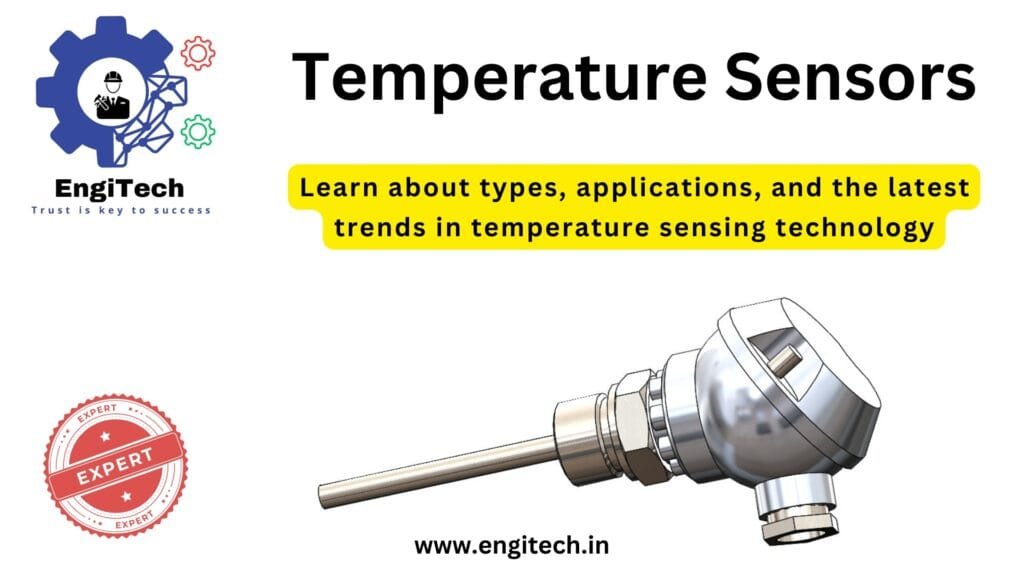Temperature sensors are critical components in countless industrial applications, from manufacturing and HVAC systems to automotive and aerospace engineering. Understanding these sensors, their types, and their applications can help you make informed decisions and optimize your systems. In this comprehensive guide, we’ll delve into the world of temperature sensors, exploring their functionalities, types, and applications.
What You Will Learn
In this guide, you’ll discover:
- The fundamental principles behind temperature sensors.
- Various types of temperature sensors and their specific uses.
- How to choose the right temperature sensor for your application.
- Key factors affecting temperature sensor performance and accuracy.
- Expert insights on the latest trends and technologies in temperature sensing.
By the end of this post, you’ll have a thorough understanding of temperature sensors and how they can enhance your operations.
What Are Temperature Sensors?
Temperature sensors are devices that measure temperature and convert it into a readable signal. These sensors are essential in various industries for monitoring and controlling processes to ensure safety, efficiency, and quality.
How Temperature Sensors Work
Temperature sensors operate based on the principle that the physical properties of certain materials change with temperature. These changes are then translated into an electrical signal, which can be measured and interpreted. Common methods include:
- Thermocouples: Measure temperature based on the voltage difference between two different metals.
- RTDs (Resistance Temperature Detectors): Measure temperature by detecting changes in electrical resistance of a metal.
- Thermistors: Measure temperature by detecting changes in resistance of ceramic materials.
- Infrared Sensors: Measure temperature by detecting infrared radiation emitted by an object.
Types of Temperature Sensors
Temperature sensors come in various types, each suited for specific applications. Understanding the differences between them will help you select the best sensor for your needs.
1. Thermocouples
Thermocouples are among the most commonly used temperature sensors. They consist of two different metals joined at one end. When this junction is heated or cooled, it produces a voltage that can be measured. Thermocouples are known for their wide temperature range, durability, and fast response times.
- Applications: Industrial processes, gas turbines, and combustion engines.
- Advantages: Wide temperature range, cost-effective, and robust.
2. RTDs (Resistance Temperature Detectors)
RTDs use the principle that a material’s electrical resistance changes with temperature. RTDs are known for their accuracy and stability, making them suitable for applications where precise temperature measurement is critical.
- Applications: Laboratory settings, industrial processes, and food processing.
- Advantages: High accuracy, stable readings, and repeatable results.
3. Thermistors
Thermistors are temperature sensors made from ceramic materials that exhibit a predictable change in resistance with temperature. They are highly sensitive and offer excellent accuracy for a limited temperature range.
- Applications: Medical devices, automotive applications, and consumer electronics.
- Advantages: High sensitivity, small size, and cost-effective.
4. Infrared Sensors
Infrared sensors measure temperature without making physical contact by detecting infrared radiation emitted from an object. They are ideal for measuring the temperature of moving objects or hazardous materials.
- Applications: Non-contact temperature measurements in various industries, including food processing and electrical maintenance.
- Advantages: Non-contact measurement, fast response time, and suitable for high-temperature applications.
Choosing the Right Temperature Sensor
Selecting the appropriate temperature sensor depends on several factors, including the application, temperature range, accuracy requirements, and environmental conditions.
Factors to Consider
- Temperature Range: Ensure the sensor can measure temperatures within the required range for your application.
- Accuracy: Choose a sensor that meets the accuracy requirements of your process or measurement.
- Response Time: Consider how quickly the sensor needs to respond to temperature changes.
- Environmental Conditions: Evaluate the sensor’s resistance to environmental factors such as moisture, chemicals, and vibration.
Application Examples
- Manufacturing: RTDs and thermocouples are commonly used to monitor and control temperatures in manufacturing processes.
- Automotive: Thermistors are often employed in automotive applications for engine temperature monitoring.
- Food Processing: Infrared sensors are used to ensure proper cooking temperatures and monitor food safety.
Key Factors Affecting Temperature Sensor Performance
Several factors can impact the performance of temperature sensors, including calibration, installation, and maintenance.
Calibration
Regular calibration ensures that your temperature sensor provides accurate and reliable measurements. Calibration should be performed according to the manufacturer’s recommendations and industry standards.
Installation
Proper installation is crucial for accurate temperature measurement. Ensure that the sensor is installed correctly and that it is in good thermal contact with the measured surface or environment.
Maintenance
Routine maintenance, including cleaning and inspecting the sensor, helps to ensure its long-term performance and reliability. Replace any damaged or worn components as needed.
Latest Trends in Temperature Sensing Technology
The field of temperature sensing is continuously evolving, with new technologies and advancements emerging regularly. Here are some of the latest trends in temperature sensing:
- Wireless Sensors: Wireless temperature sensors are becoming increasingly popular, offering greater flexibility and ease of installation in hard-to-reach locations.
- Smart Sensors: Integration with IoT (Internet of Things) technology allows temperature sensors to provide real-time data and enable remote monitoring and control.
- Advanced Materials: New materials and technologies are enhancing the performance and accuracy of temperature sensors, making them suitable for even more demanding applications.
Conclusion
Temperature sensors play a crucial role in various industrial and commercial applications, providing essential data for process control, safety, and efficiency. By understanding the different types of temperature sensors and their applications, you can make informed decisions and select the best sensor for your needs.
For more in-depth information and resources on temperature sensors and other industrial technologies, explore EngiTech. Stay updated on the latest innovations and applications in the field!

